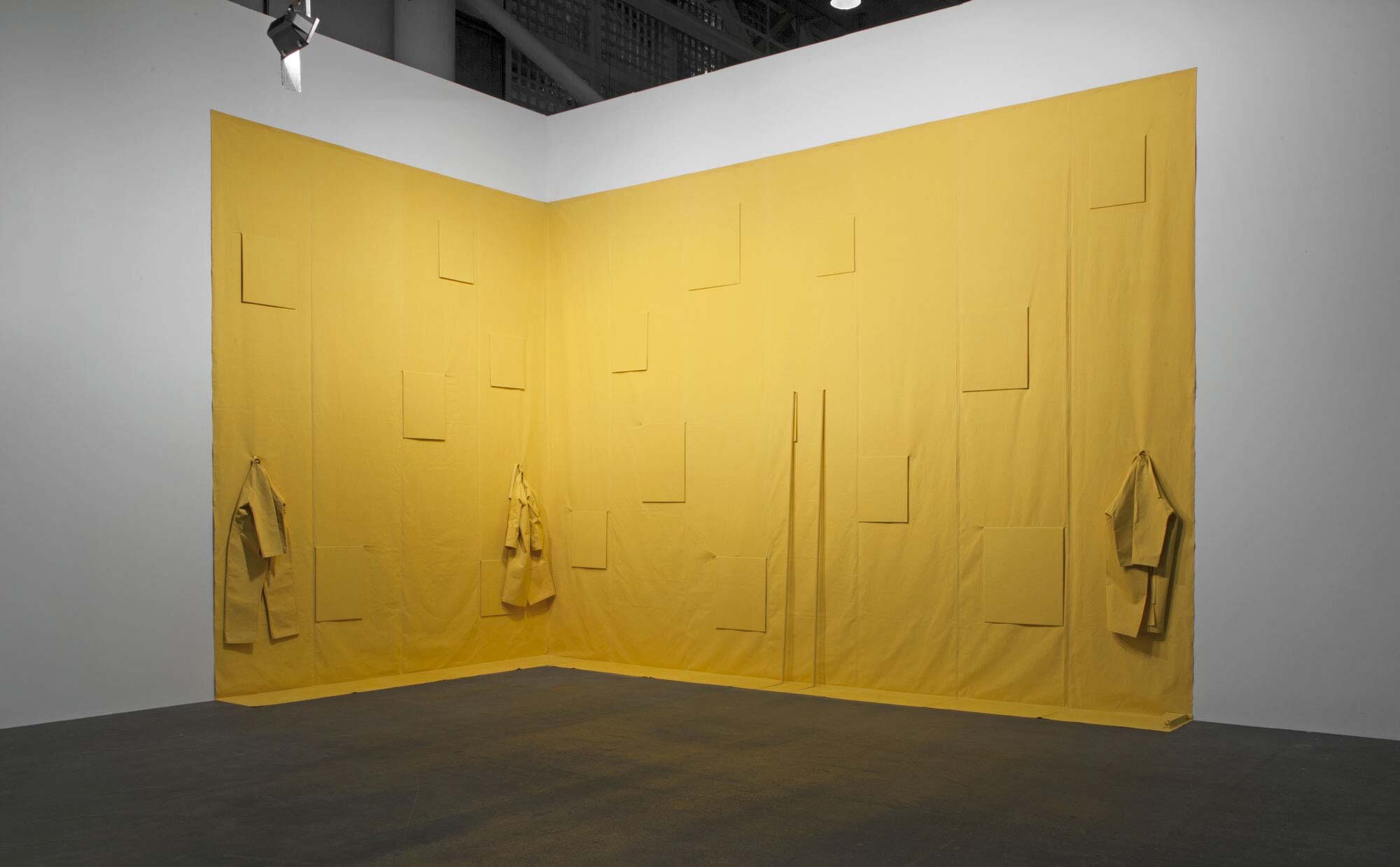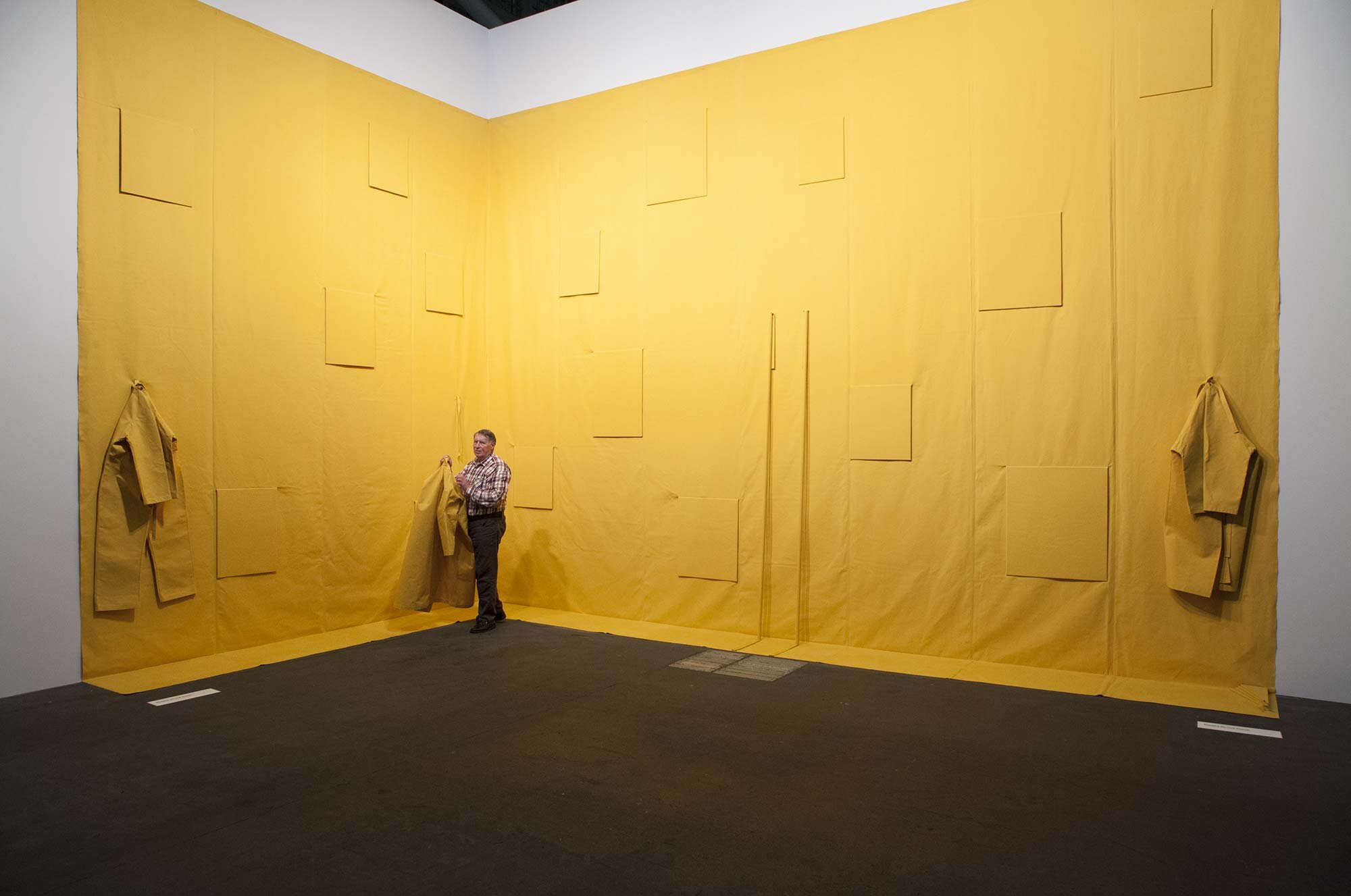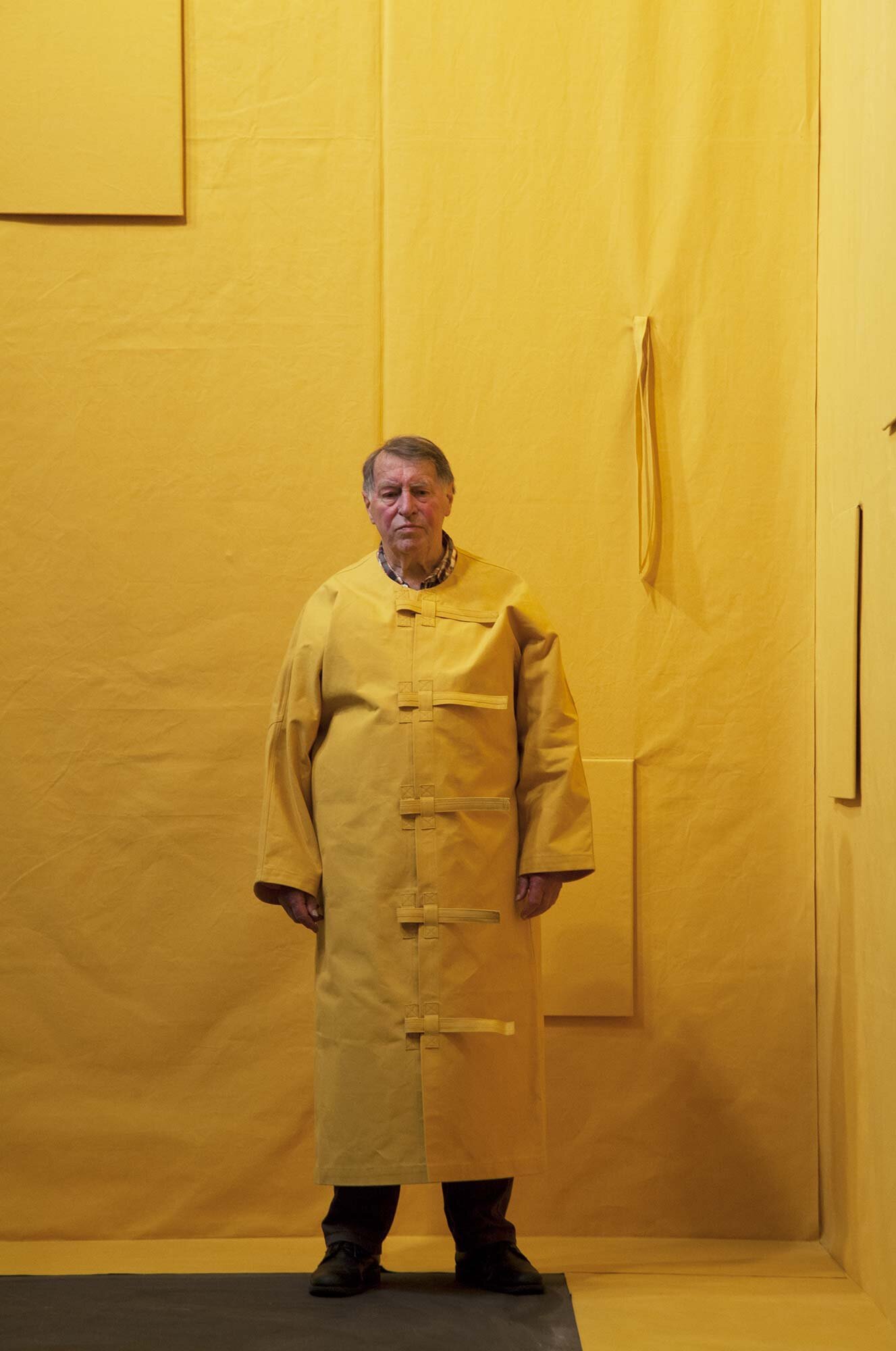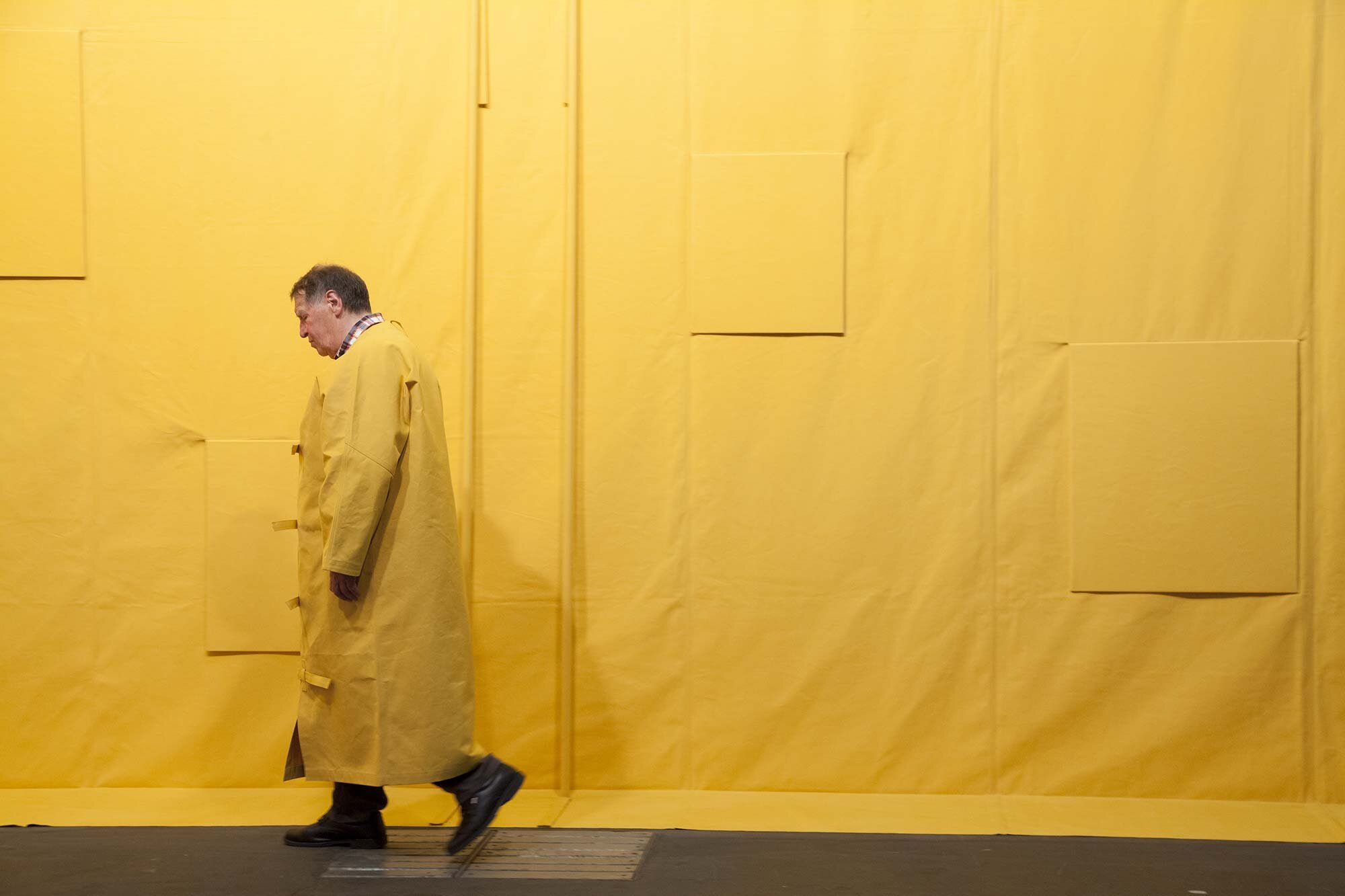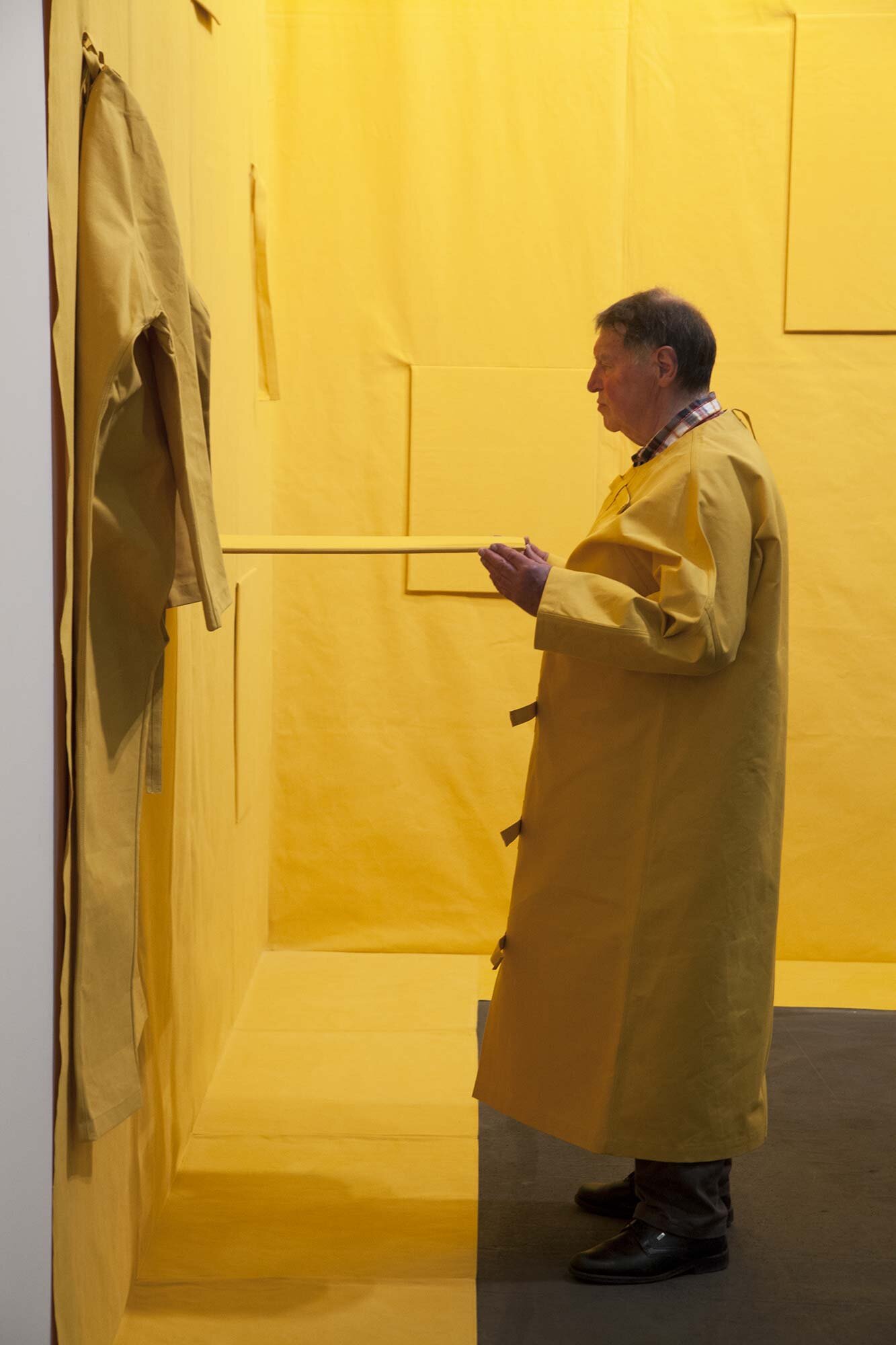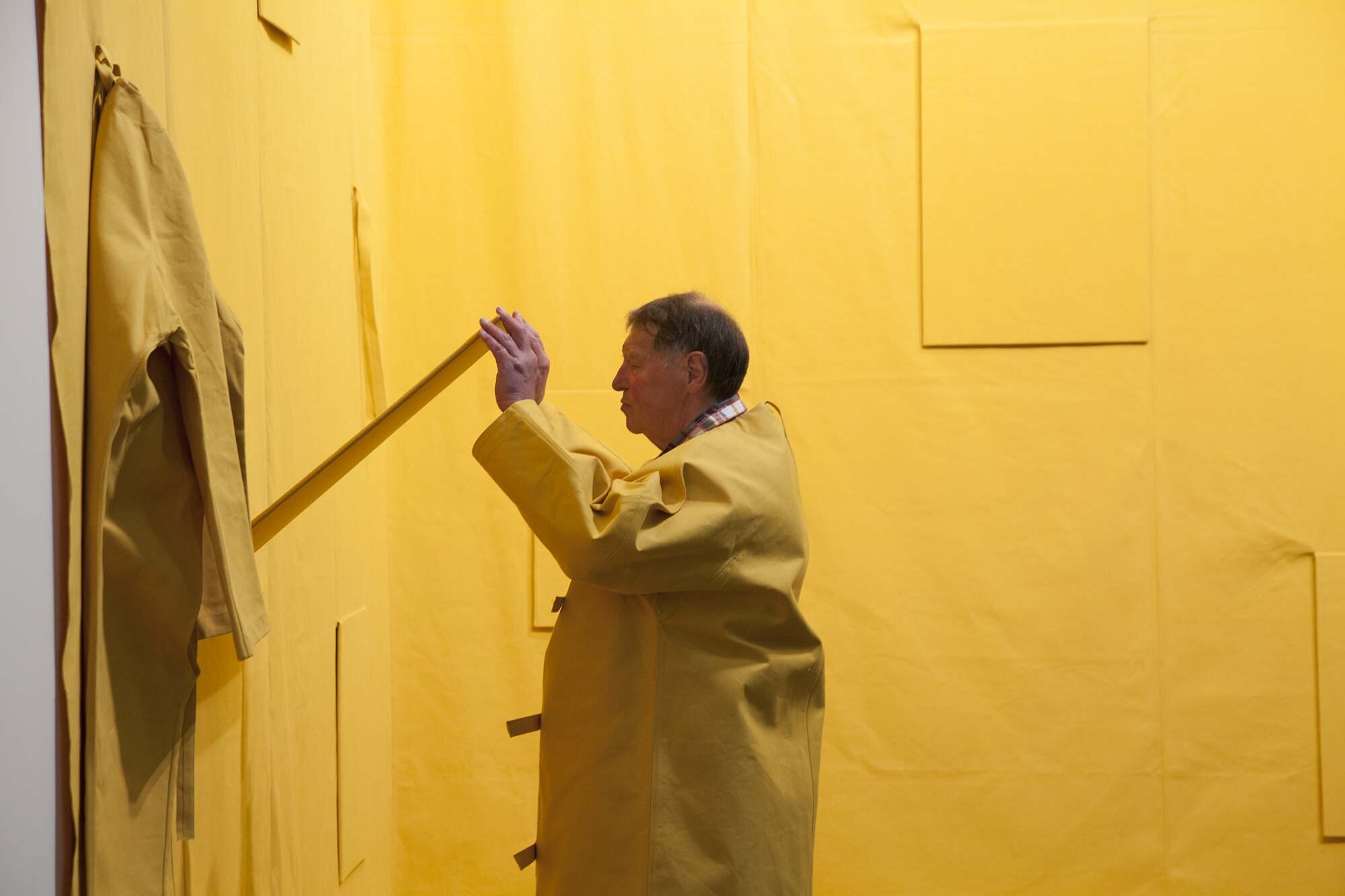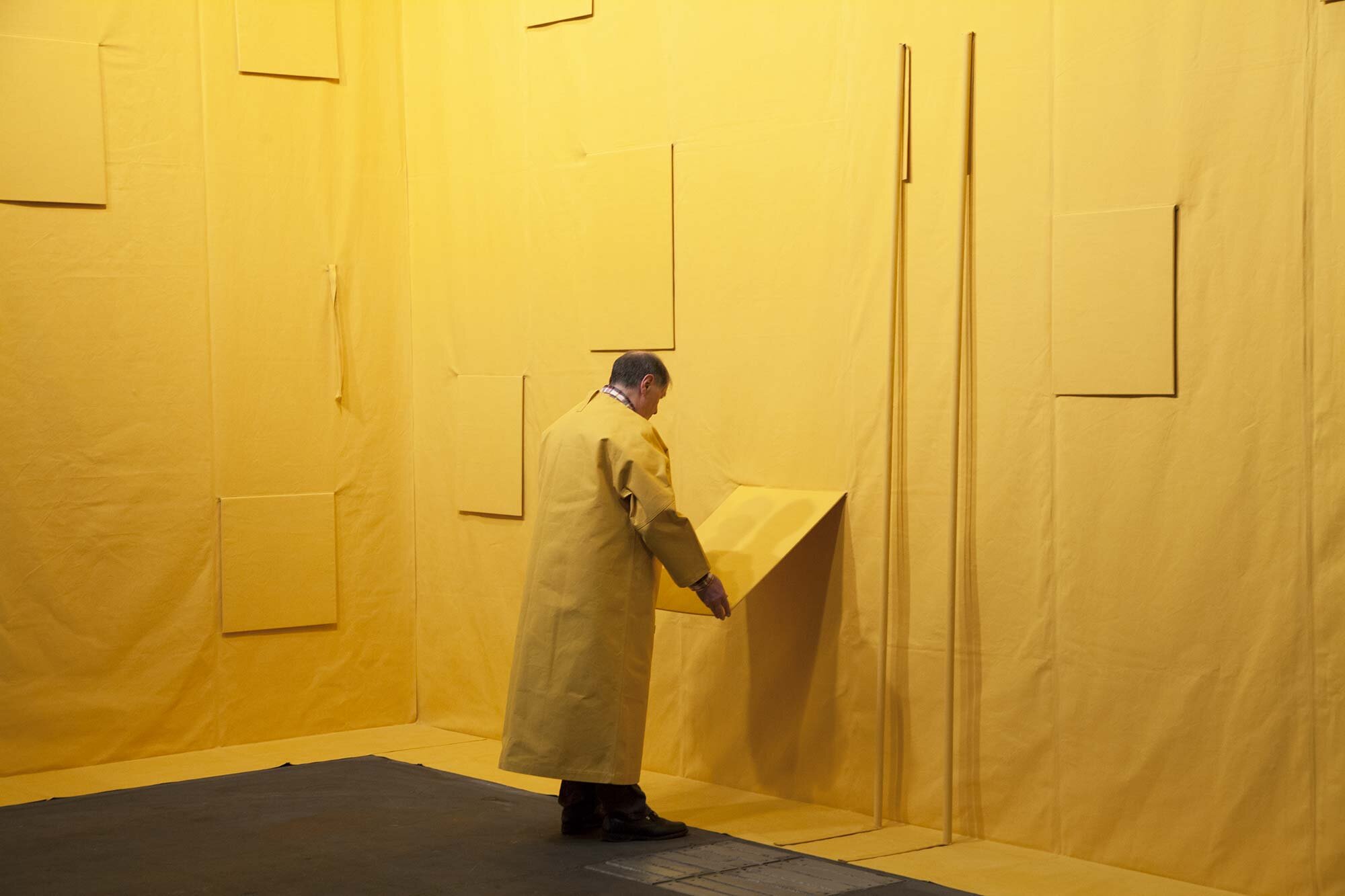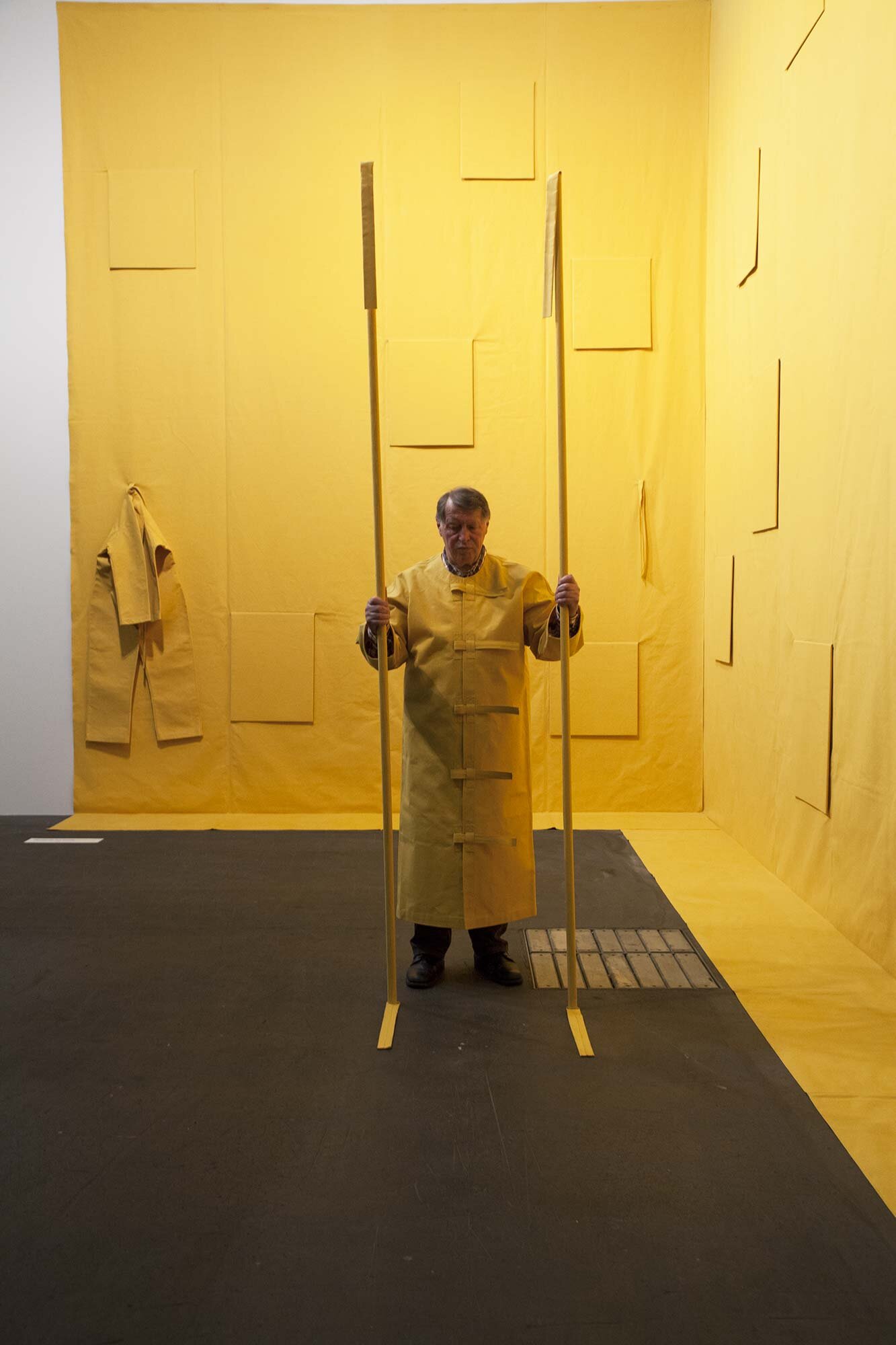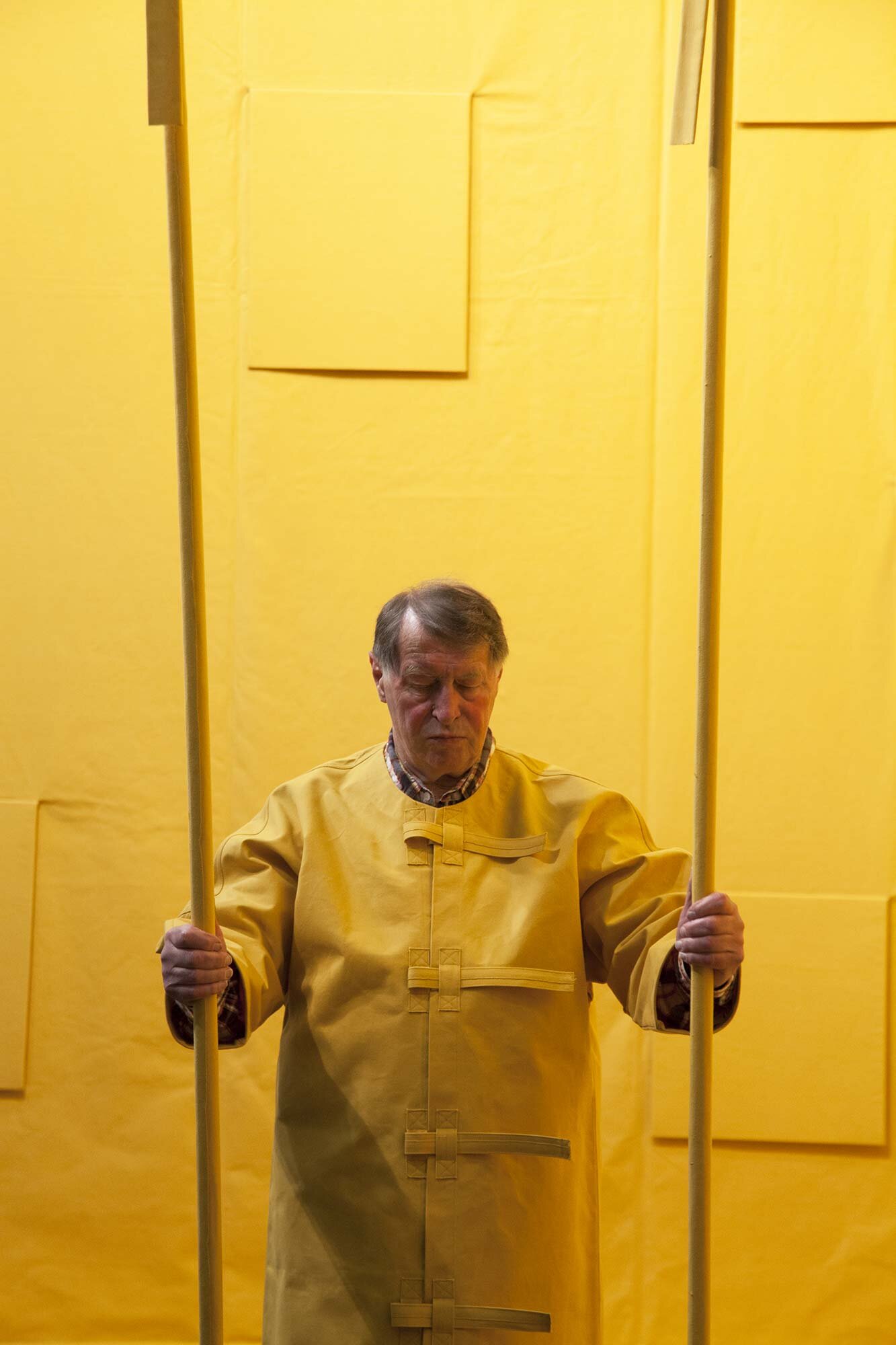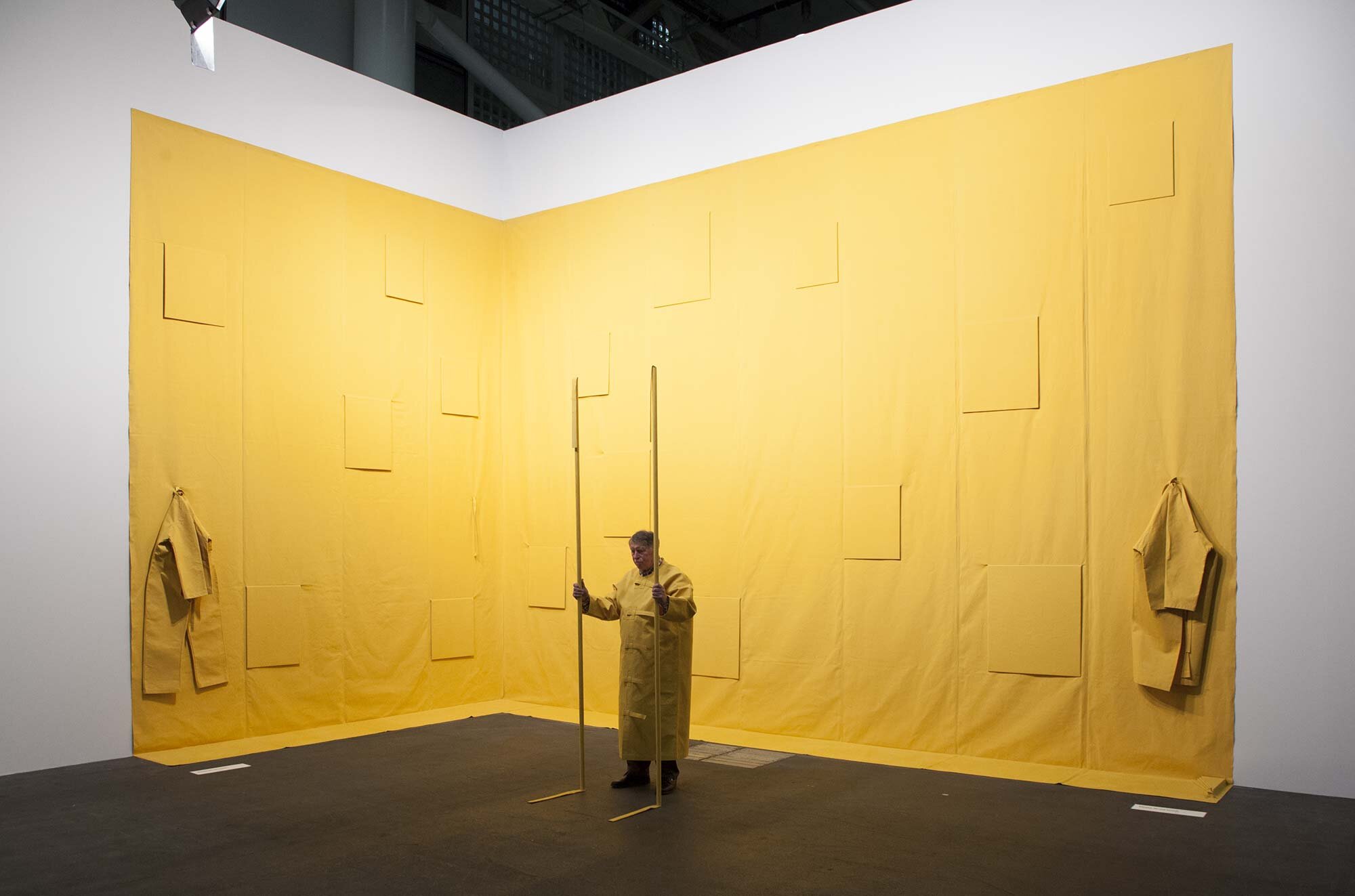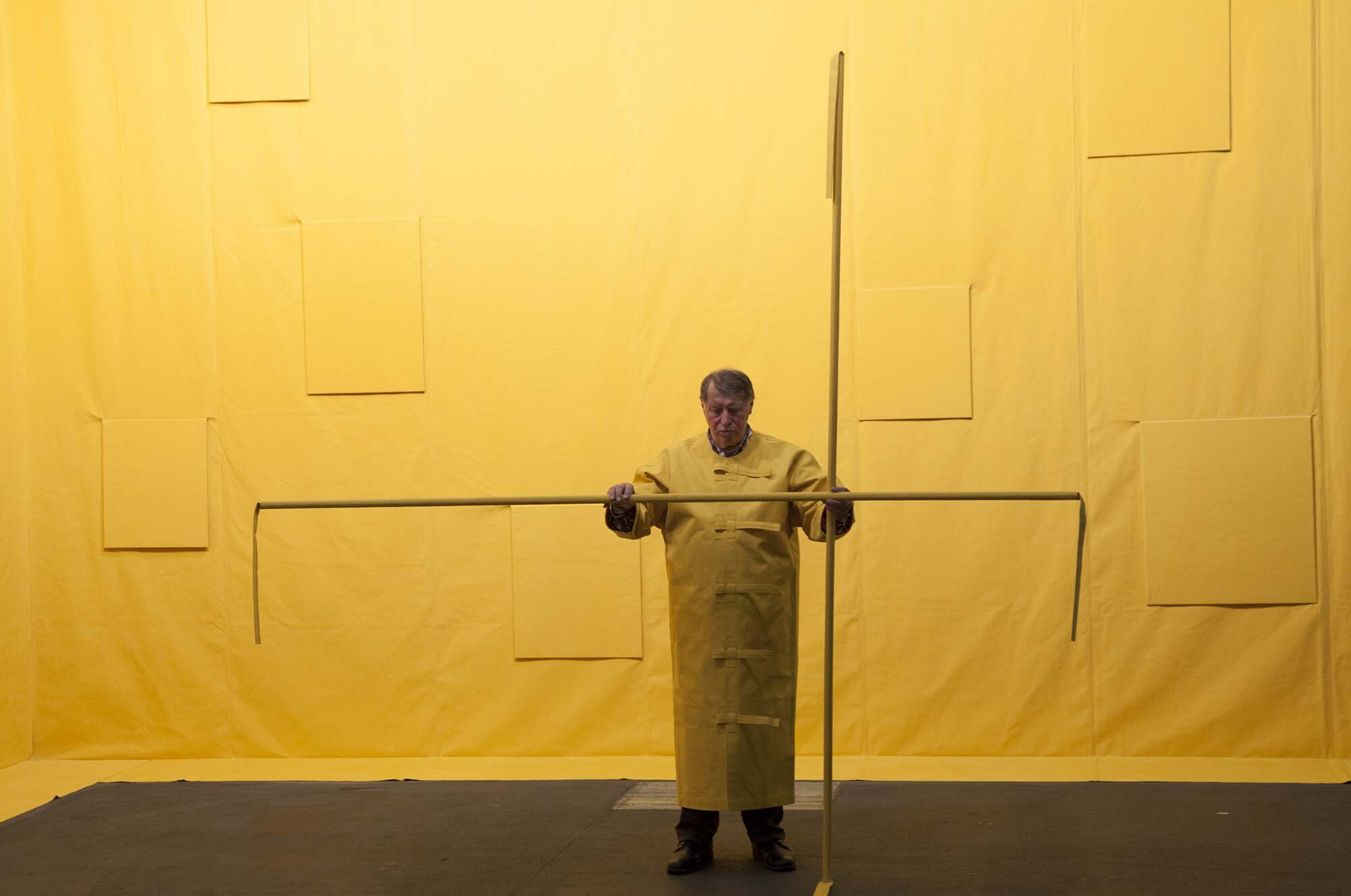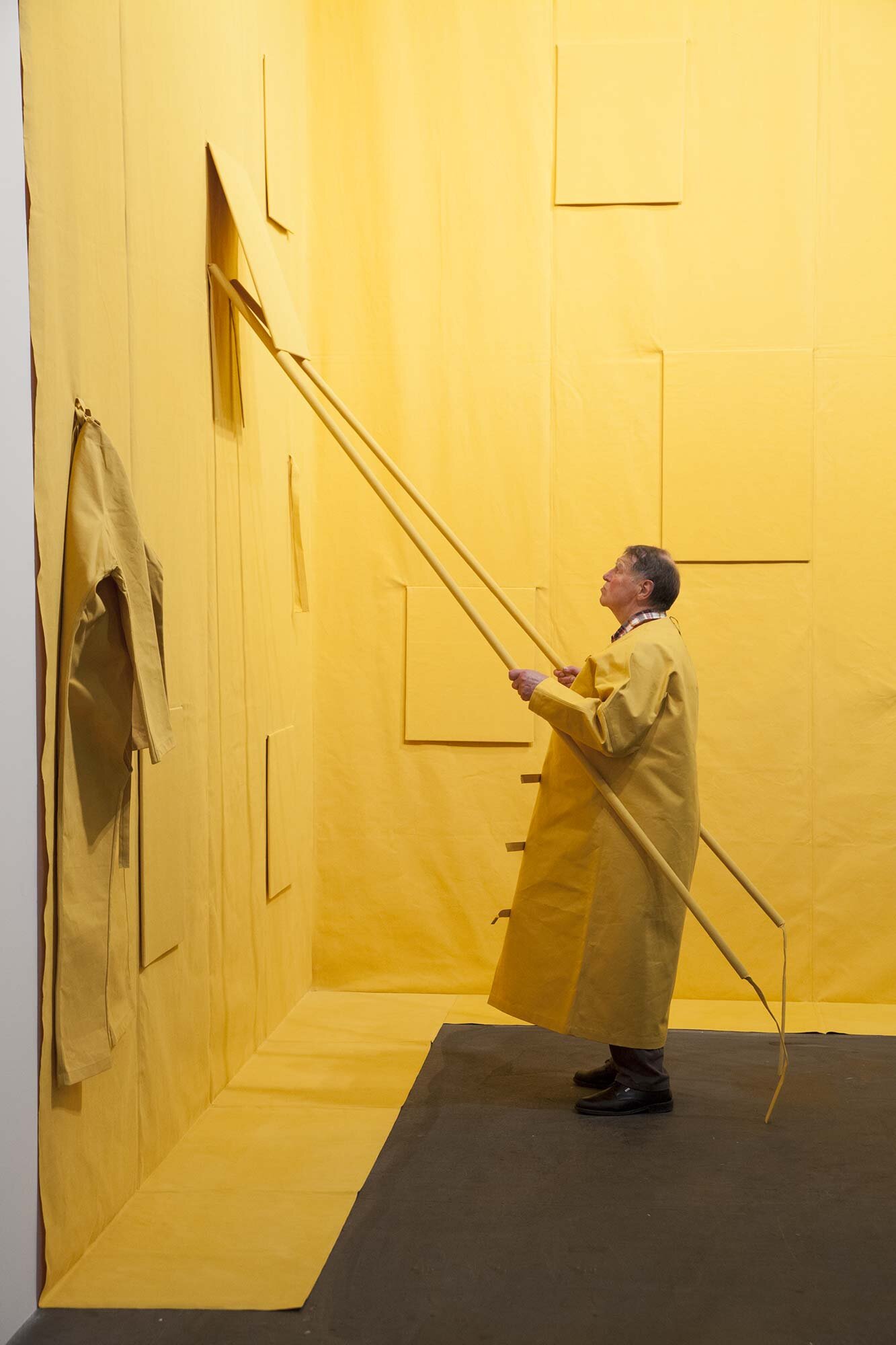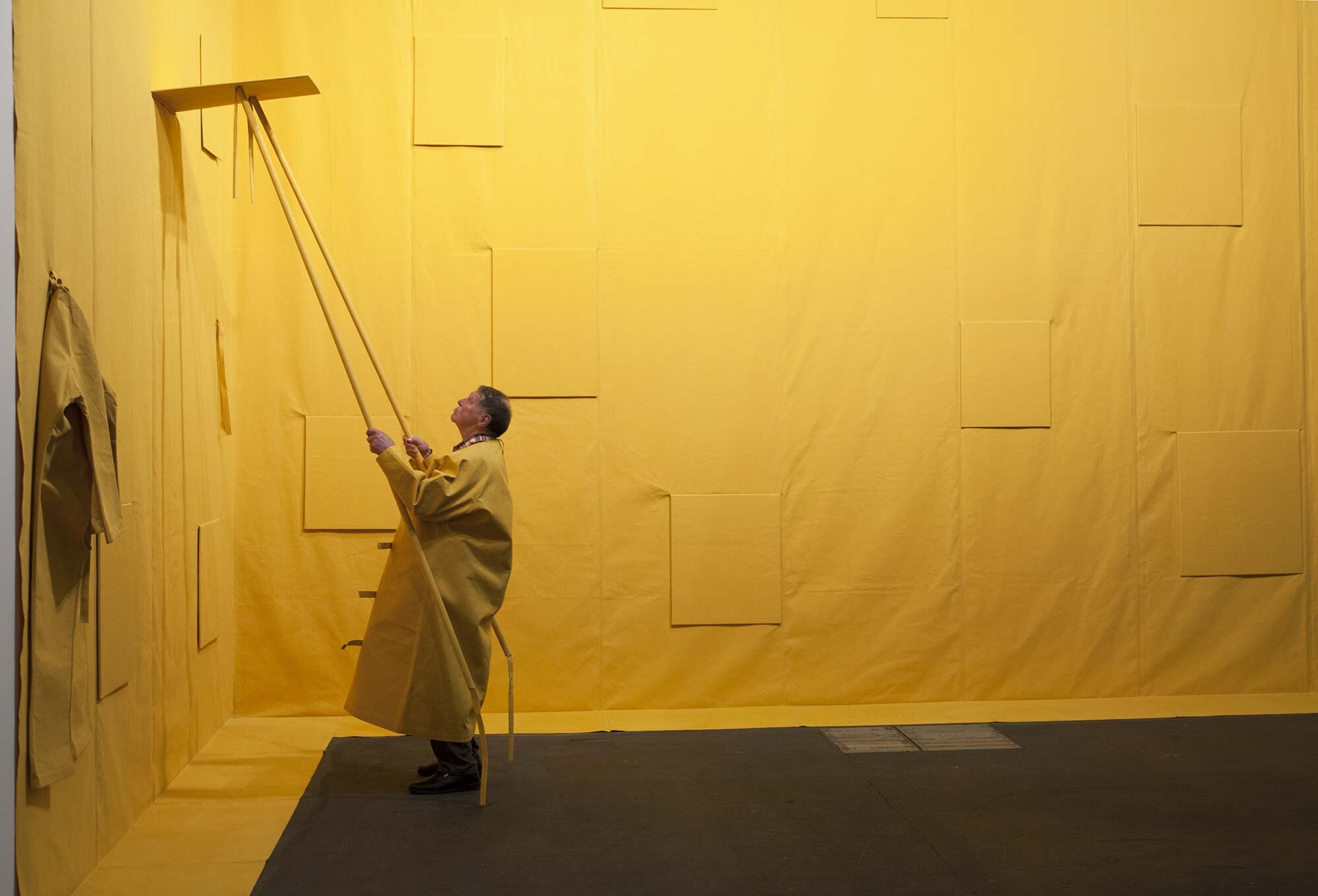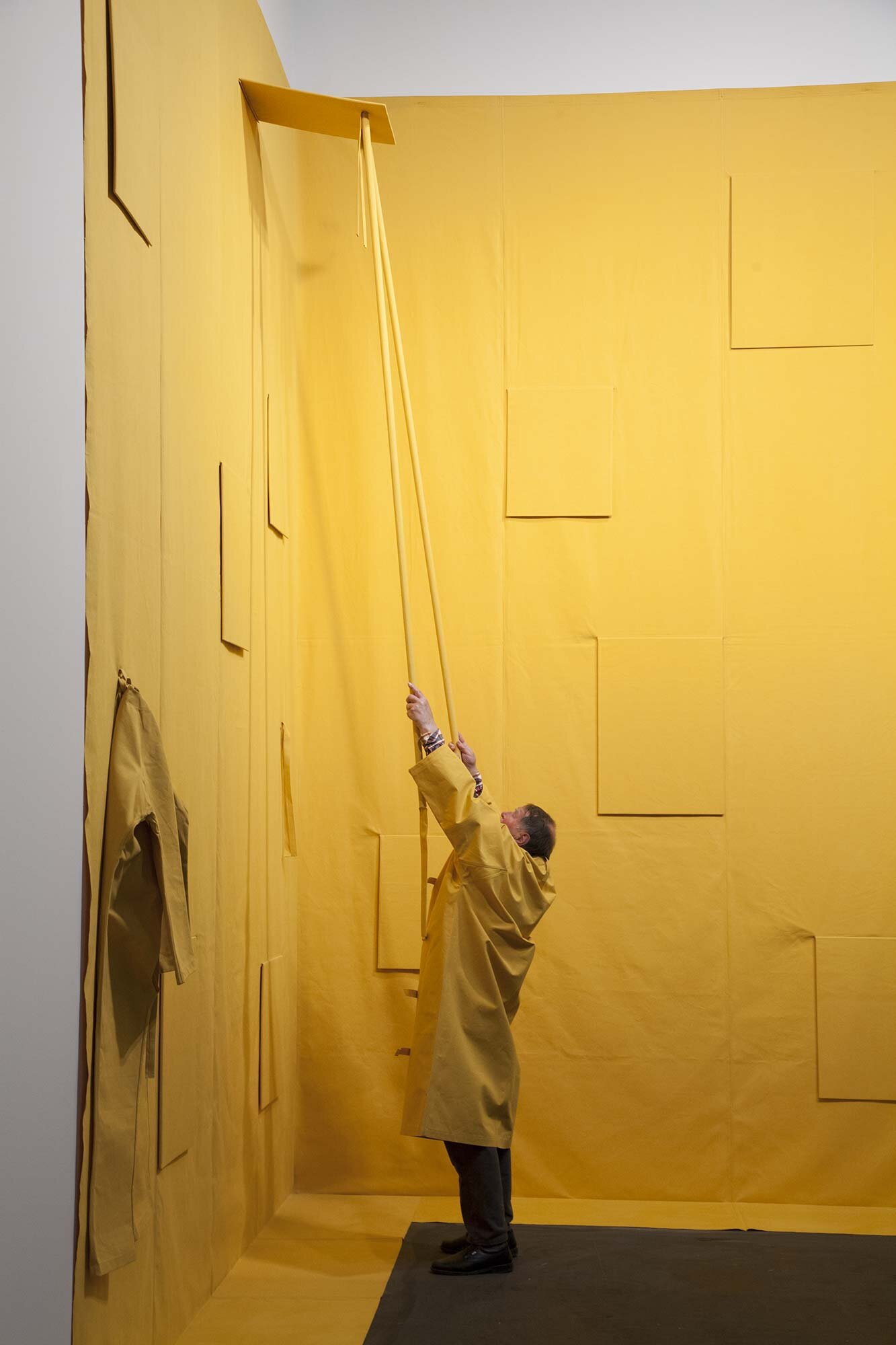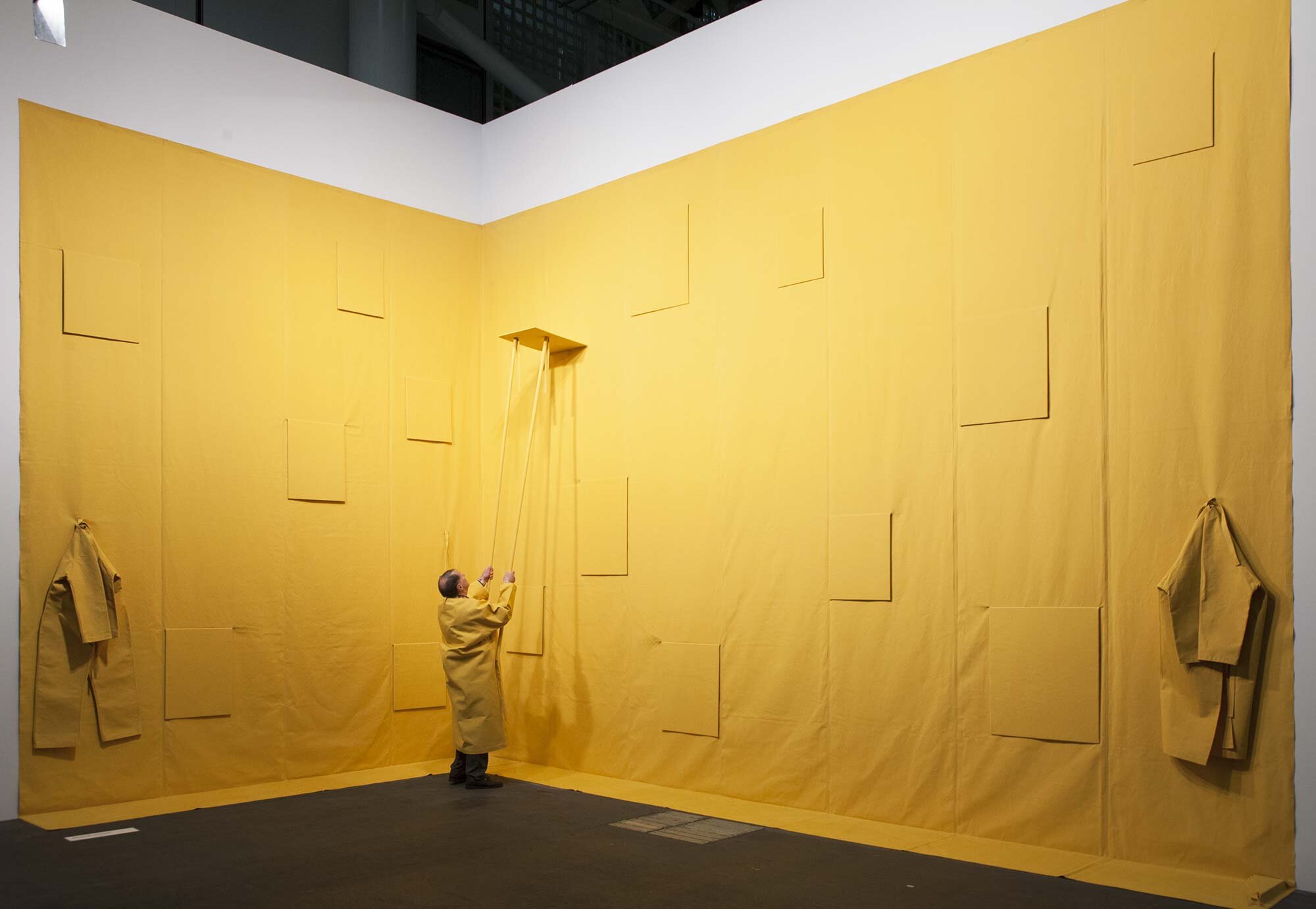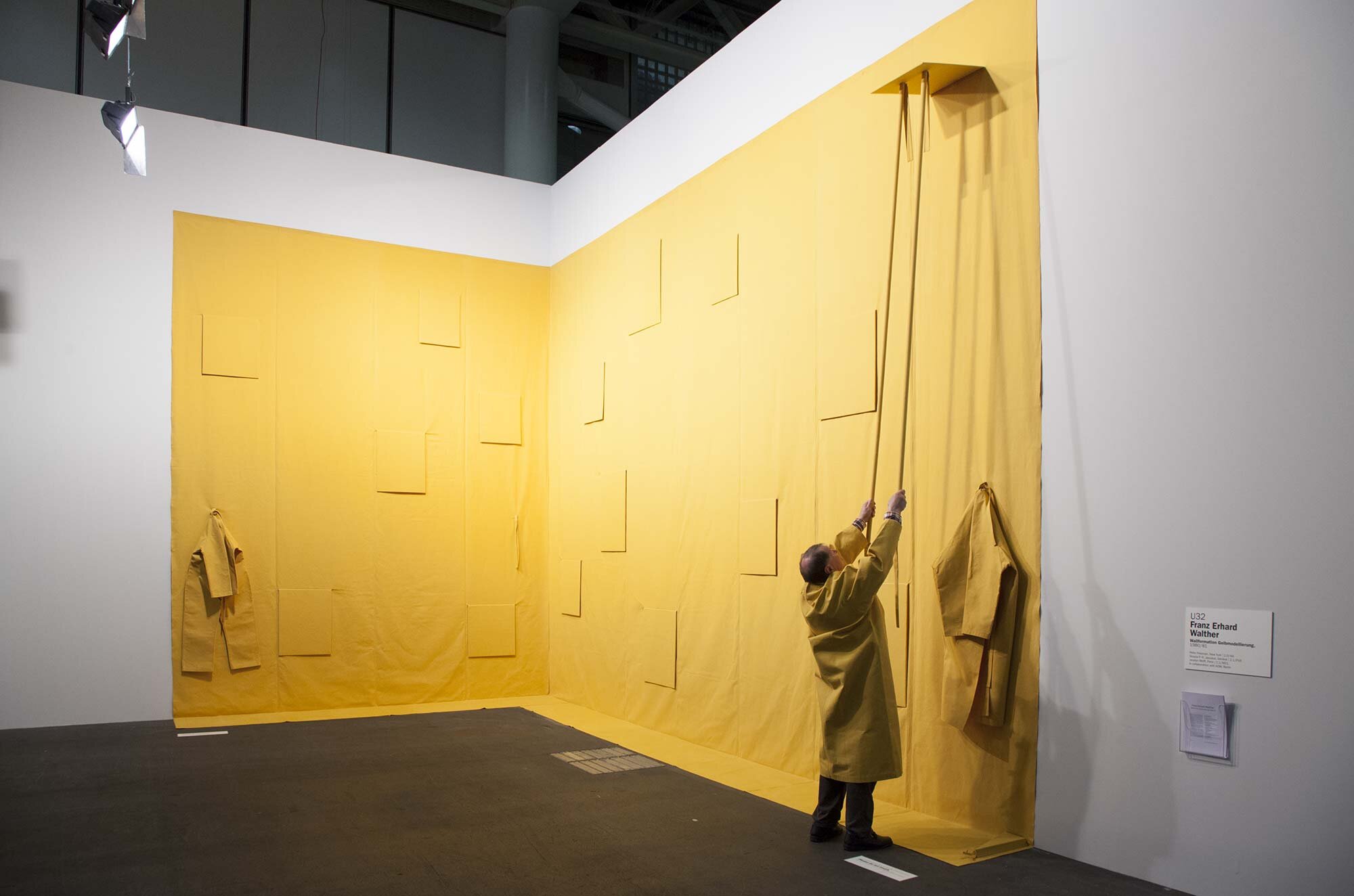Skopia participated in Art Unlimited in 2015, presenting Franz Erhard Walther’s work. Gelbmodellierung, 1980-81 is the largest work Walther has ever made in the Wallformation series. It has not been seen for 26 years, having last been shown at the Vienna Secession in 1989.
About Gelbmodellierung
From 1978 up to 1986 Franz Erhard Walther conceived a unique series of performative installations which he called ‘Wallformations’. The monochrome red, yellow and black ‘Wallformations’ are made out of canvas. Gelbmodellierung from 1980-1981 is highlighted within this series by its intense bright and luminous yellow as well as by its size: It is the largest piece of the series.
The piece occupies one corner of the exhibition space with different objects out of or covered by yellow dyed canvas. The wall is covered by a yellow plane of 520 × 1100 × 60 cm size. 15 yellow squares are rhythmically displayed over this plane. Moreover, as in a wardrobe there are also two yellow coats and one suits each divided into two parts, fastened with laces and bands onto the wall plane. Finally two wooden yellow covered sticks are placed in the center of the piece.
With Gelbmodellierung Walther offers an art work which is hybrid in all senses. At the same time it is painting as well as sculpture as well as architecture and performance stage. The term relief might grasp its spatial and dimensional indetermination but it fails to connote its temporal dimension. Although it is strictly related to the architectural site Walther has conceived it as a portable situation in which the specificity of the work itself can be experienced by so called ‘work actions’.
Within Gelbmodellierung five different actions can be carried out. Wearing each element of the coats and the suit and by using the sticks the yellow squares can be lifted from the wall and flapped back. While watching Walther performing the piece it becomes obvious that he has conceived it in relation to human, especially to his own scale. His body is the main reference for all relations and proportions of the ‘Wallformations’.
During the performance Walther always changes his position and focus. Wearing the coats or the suit one at a time he starts by standing with his back to the wall watching the viewers who thus are directly addressed by the work. To carry out the action, i.e. to lift and flap the yellow squares, he has to turn his back to the viewer while performing the work options. Action and perception at the same time exclude and require each other. Each of them is inextricably connected to the imagination of the other. This equilibration of seeing, acting and imagining is crucial for Franz Erhard Walther’s new concept of work.
— Nasim Weiler
The presentation is made in collaboration with the Franz Erhard Walther Foundation, KOW Berlin, Peter Freeman Inc, and Galerie Jocelyn Wolff.
